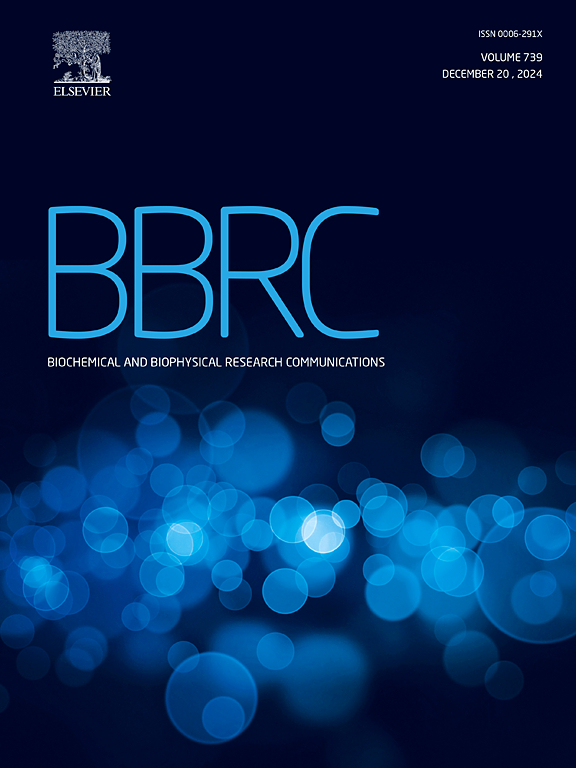Crosstalk between pancreatic cancer and adipose tissue: Molecular mechanisms and therapeutic implications
IF 2.5
3区 生物学
Q3 BIOCHEMISTRY & MOLECULAR BIOLOGY
Biochemical and biophysical research communications
Pub Date : 2024-11-15
DOI:10.1016/j.bbrc.2024.151012
引用次数: 0
Abstract
The incidence rate of pancreatic cancer, a fatal illness with a meager 5-year survival rate, has been on the rise in recent times. When individuals accumulate excessive amounts of adipose tissue, the adipose organ becomes dysfunctional due to alterations in the adipose tissue microenvironment associated with inflammation and metabolism. This phenomenon may potentially contribute to the aberrant accumulation of fat that initiates pancreatic carcinogenesis, thereby influencing the disease's progression, resistance to treatment, and metastasis. This review presents a summary of the impact of pancreatic steatosis, visceral fat, cancer-associated adipocytes and lipid diets on the advancement of pancreatic cancer, as well as the reciprocal effects of pancreatic cancer on adipose tissue. Understanding the molecular mechanisms underlying the relationship between dysfunctional adipose tissue and pancreatic cancer better may lead to the discovery of new therapeutic targets for the disease's prevention and individualized treatment. This is especially important given the rising global incidence of obesity, which will improve the pancreatic cancer treatment options that are currently insufficient.
胰腺癌与脂肪组织之间的相互影响:分子机制和治疗意义
胰腺癌是一种致命疾病,5 年存活率极低,近年来发病率呈上升趋势。当人体内积聚过多脂肪组织时,由于脂肪组织微环境发生变化,与炎症和新陈代谢相关的脂肪组织微环境也会发生变化,从而导致脂肪器官功能失调。这种现象有可能导致脂肪异常堆积,引发胰腺癌,从而影响疾病的进展、抗药性和转移。本综述概述了胰腺脂肪变性、内脏脂肪、癌症相关脂肪细胞和脂质饮食对胰腺癌进展的影响,以及胰腺癌对脂肪组织的相互影响。更好地了解脂肪组织功能失调与胰腺癌之间关系的分子机制,可能有助于发现预防和个体化治疗胰腺癌的新靶点。鉴于全球肥胖症发病率不断上升,这一点尤为重要,它将改善目前胰腺癌治疗方案不足的状况。
本文章由计算机程序翻译,如有差异,请以英文原文为准。
求助全文
约1分钟内获得全文
求助全文
来源期刊
CiteScore
6.10
自引率
0.00%
发文量
1400
审稿时长
14 days
期刊介绍:
Biochemical and Biophysical Research Communications is the premier international journal devoted to the very rapid dissemination of timely and significant experimental results in diverse fields of biological research. The development of the "Breakthroughs and Views" section brings the minireview format to the journal, and issues often contain collections of special interest manuscripts. BBRC is published weekly (52 issues/year).Research Areas now include: Biochemistry; biophysics; cell biology; developmental biology; immunology
; molecular biology; neurobiology; plant biology and proteomics

 求助内容:
求助内容: 应助结果提醒方式:
应助结果提醒方式:


